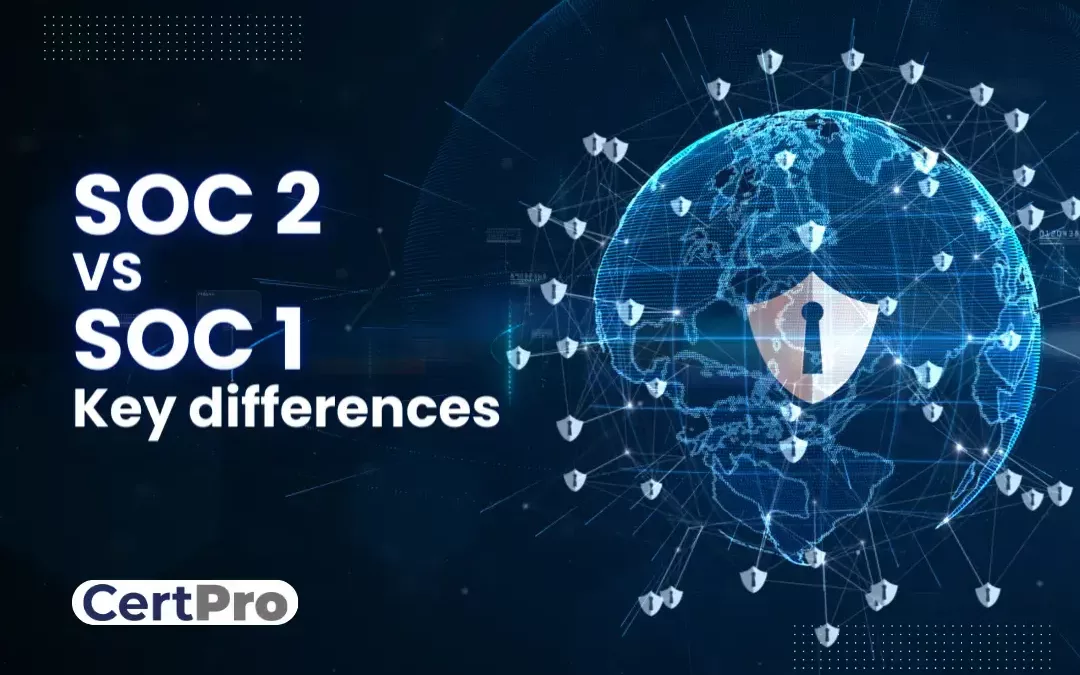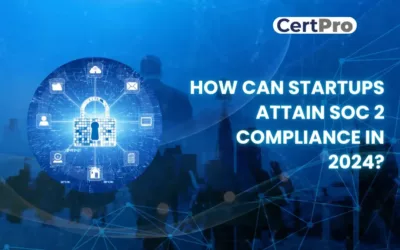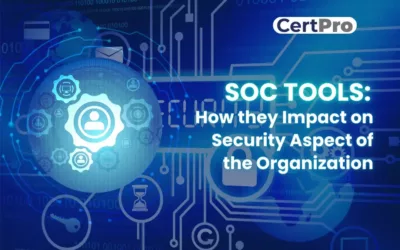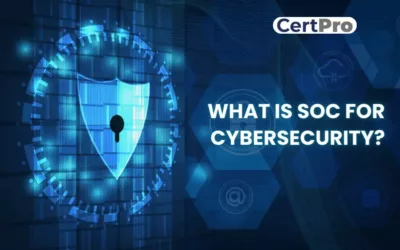In today’s digitally driven business landscape, ensuring the security and dependability of data and systems has become paramount. Two crucial frameworks, SOC 2 (System and Organization Controls 2) and SOC 1 (System and Organization Controls 1), play vital roles in attesting to the security and control measures employed by service organizations. While SOC 1 primarily focuses on internal controls with implications for financial reporting, SOC 2 takes a broader approach, emphasizing the security, availability, processing integrity, confidentiality, and privacy of customer data. It’s impossible to overstate the significance of trust service reporting, as SOC 2 vs SOC 1 clearly underscore their distinct but equally critical roles.
In order to understand the nuances of SOC 2 vs SOC 1, as well as their importance in guaranteeing data security and operational integrity, this article will examine the standards in depth. It will go into the particular standards and tenets that underpin these frameworks and show how they affect organizations and the level of trust they foster. With that in mind, this essay aims to present a thorough knowledge of how SOC 2 and SOC 1 help foster trust in the digital era.
WHAT ARE SOC 2 AND SOC 1?
The American Institute of Certified Public Accountants (AICPA) developed SOC 2 (System and Organization Controls 2) and SOC 1 (System and Organization Controls 1) as two crucial frameworks for assessing and reporting on the controls and procedures of service organizations. By ensuring the security and dependability of systems and data, these frameworks play a critical role in inspiring confidence and trust among clients, partners, and stakeholders.
Technology service providers are the target audience of SOC 2, which focuses on how trustworthy their control environment is. Five fundamental trust service principles (TSPs) are evaluated: security, availability, processing integrity, confidentiality, and privacy. SOC 2 audits extensively evaluate controls related to data security, system availability, data processing accuracy, confidentiality precautions, and privacy standards. Successful SOC 1 vs. SOC 2 audit participants receive a thorough report that can be shared with clients as proof of their dedication to protecting private information and upholding operational integrity.
SOC 1, on the other hand, is designed to evaluate a service organization’s internal controls in relation to financial reporting. For companies that offer services that have an effect on their clients’ financial accounts, this is especially pertinent. SOC 1 vs. SOC 2 reports emphasize the controls that reduce the risks associated with financial statements and provide clients with assurances regarding the veracity and correctness of financial data. SOC 1 audits produce two different sorts of reports: Type I reviews the controls’ design, and Type II evaluates their operational efficacy over a predetermined time period.
SIMILARITIES BETWEEN SOC 2 and SOC 1
The American Institute of Certified Public Accountants (AICPA) established SOC 2 and SOC 1, two crucial frameworks that serve separate yet complementary functions in assuring the dependability and trustworthiness of service businesses. Despite having various functions, they have a few key things in common:
- AICPA Framework: The AICPA’s System and Organization Controls (SOC) reporting structure includes both SOC 2 and SOC 1. This framework provides a structured method for assessing and disclosing controls in service organizations to meet particular demands, such as financial reporting (SOC 1) or technological service security (SOC 2).
- Third-Party Audits: Independent third parties conduct audits for both SOC 2 vs SOC 1. Qualified auditors evaluate an organization’s controls, testing their operability and design. A thorough report detailing the audit’s findings offers information on the organization’s risk management procedures and control environment.
- Trust and Assurance: Both frameworks seek to give stakeholders certainty. SOC 2 shows a company’s dedication to protecting customer data and upholding operational integrity, which promotes trust with customers, partners, and stakeholders. SOC 1 provides clients with the reassurance that the service organization’s internal controls are sufficient to guard against financial misrepresentation and errors.
- Detailed Reporting: Soc 1 vs. Soc 2 reports produce reports that go into depth about the controls that were examined, the outcomes of the testing, and the auditors’ final judgment. These reports provide transparency and insight into the control environment of the company, empowering stakeholders to make well-informed decisions.
- Compliance and Improvement: Both platforms support legal compliance and ongoing development. SOC 2 supports enterprises’ compliance efforts by assisting them in adhering to industry standards for data security and privacy.
- Relevance to Service Providers: Although they focus on different topics, both frameworks are applicable to service providers. Technology service providers can show their dedication to data security and operational excellence by submitting to SOC 2.
DIFFERENCE BETWEEN SOC 2 AND SOC 1
The American Institute of Certified Public Accountants (AICPA) has created two distinct reporting frameworks, SOC 2 and SOC 1, each of which is intended to address a different component of controls inside service businesses. The following are the main differences between SOC 1 and SOC 2:
1. Purpose and Focus:
SOC 2: Controls related to the security, availability, processing integrity, confidentiality, and privacy of client data as well as system operations are the main focus of SOC 2. Technology service providers and businesses that handle or keep sensitive data on behalf of clients frequently employ it. The organization’s dedication to data security and operational excellence is demonstrated through SOC 2 vs SOC 1.
SOC 1: Contrarily, SOC 1 is focused on controls that have an influence on financial reporting. It is essential for service providers who offer services that have an impact on their clients’ financial statements, including investment management or payroll processing. SOC 1 reports guarantee the accuracy and dependability of the processing of financial data.
2. Trust Service Principles vs. Financial Controls:
SOC 2: Security, availability, processing integrity, confidentiality, and privacy are the five trust service principles (TSPs) on which SOC 2 bases its evaluation of controls. These guidelines emphasize data security, system dependability, and privacy regulations.
SOC 1: SOC 1 evaluates financial reporting procedures’ operational performance and design-related controls. It focuses on measures that affect the validity, correctness, and completeness of financial statement statements.
3. Report Types:
SOC 2: There are two types of reports, SOC 1 vs. SOC 2 reports: Type I and Type II. While Type II reports contain an evaluation of the operating effectiveness of these controls over a given period, typically at least six months, Type I reports explain the design of controls at a certain point in time.
SOC 1: A similar distinction is reflected in the Type I and Type II SOC 1 reports. Control design is evaluated in Type I reports, and control operation is also evaluated in Type II reports during a predetermined time period.
4. Relevance to Service Providers:
SOC 2: To show their dedication to data security and privacy, technology service providers, cloud service providers, data centers, and companies dealing with sensitive client data frequently submit to SOC 1 vs. SOC 2 audits.
SOC 1: To reassure their clients of the integrity and dependability of financial information, service firms that offer services that have an impact on their clients’ financial reporting, such as financial statement preparation or transaction processing, pursue SOC 1 compliance.
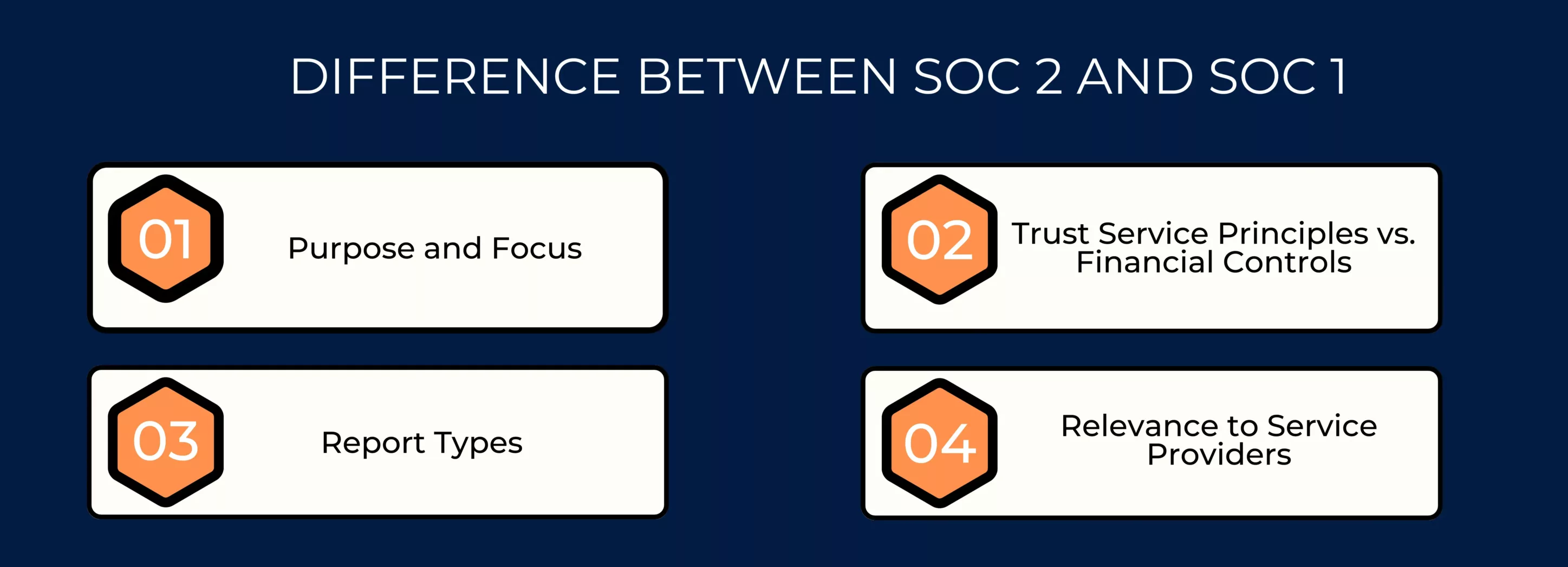
WHICH ONE IS BETTER FOR YOUR BUSINESS, SOC 1 OR SOC 2?
Choosing between SOC 1 and SOC 2 is dependent on your business emphasis and the report’s intended users. Financial firms and payroll processors frequently employ SOC 1 when they need to demonstrate strong financial controls to auditors, investors, regulators, and other user organizations.
SOC 2, on the other hand, is more appropriate if your goal is to draw attention to security, privacy, and availability measures for both present and new clients. Businesses in cloud services, data centers, and SaaS need to know this.
In certain situations, it may be advisable for service organizations with integrated financial and information systems to obtain both SOC 1 and SOC 2 reports in order to fully cover every control domain. To find the best SOC report type that meets your goals, it is recommended that you do a gap analysis with the assistance of knowledgeable risk management advisers.
CERTPRO: TRUSTED PARTNER IN COMPLIANCE AND ASSURANCE
To sum up, the differences between SOC 1 and SOC 2 are that they both are significant frameworks that play different but equally important functions in the world of service organization controls and reporting. The trust service principles are a major focus of SOC 2, which makes sure that businesses handling sensitive data adhere to strict criteria for data security, availability, processing integrity, confidentiality, and privacy. By providing confidence that their internal controls are strong enough to sustain the accuracy and reliability of financial data, SOC 1 is essential for service firms that directly affect their clients’ financial reporting. The decision between SOC 2 vs SOC 1 depends on the nature of an organization’s services and the particular needs of its clientele as it works to build trust with customers, partners, and stakeholders. An essential part of helping firms with their SOC 2 and SOC 1 compliance efforts is CertPro, a top provider of certification and compliance services.
FAQ
What are soc 1 vs soc 2 difference?
Trust service principles (TSPs) such as security, availability, processing integrity, confidentiality, and privacy are the main focus of SOC 2. It evaluates these principles’ controls for technology service providers. SOC 1 assesses internal controls that have an impact on financial reporting procedures, which is important for businesses that have an impact on the financial statements of their clients.
ARE THERE ANY COMMONALITIES BETWEEN SOC 2 AND SOC 1?
WHAT TYPES OF CONTROLS DO SOC 2 AND SOC 1 ASSESS?
WHO SHOULD CONSIDER SOC 2 COMPLIANCE, AND WHO SHOULD CONSIDER SOC 1 COMPLIANCE?
IS SOC 2 COMPLIANCE A ONE-TIME EFFORT?

About the Author
ANUPAM SAHA
Anupam Saha, an accomplished Audit Team Leader, possesses expertise in implementing and managing standards across diverse domains. Serving as an ISO 27001 Lead Auditor, Anupam spearheads the establishment and optimization of robust information security frameworks.
HOW CAN STARTUPS ATTAIN SOC 2 COMPLIANCE IN 2024?
Trust is crucial for startups to do well in today's digital world. It's vital for establishing credibility with clients, especially in a data-driven environment where privacy is the main component. Therefore, getting a SOC 2 compliance report is crucial to building...
SOC TOOLS: How They Impact On Security Aspect Of The Organization
The changing cybersecurity landscape increases the importance of Security Operations Center (SOC) tools. Hence, it is essential for strengthening digital defenses and protecting against cyberattacks. SOC tools help security teams detect, monitor, and prevent security...
WHAT IS SOC FOR CYBERSECURITY?
In today's fast-paced digital landscape, ensuring robust cybersecurity measures is imperative for organizations aiming to protect sensitive data and maintain stakeholder trust. The American Institute of CPAs (AICPA) crafted the SOC for cybersecurity reporting...

